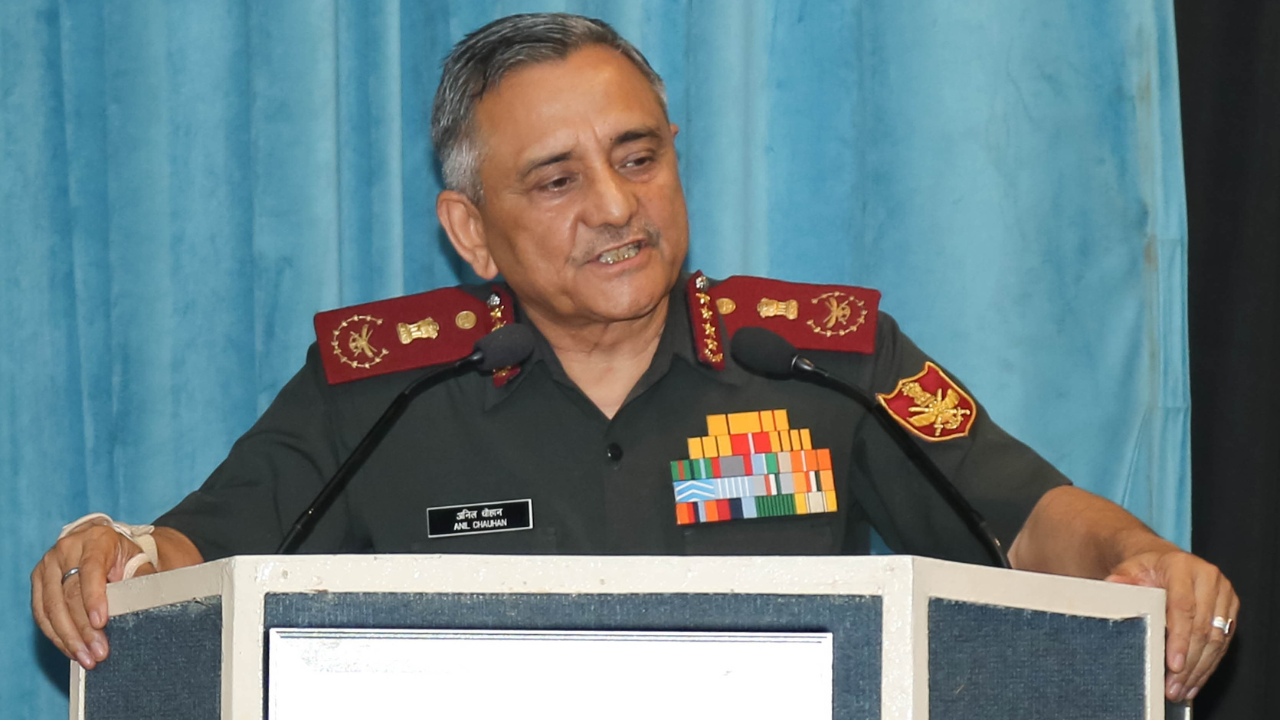
Theatre commands will bolster military preparedness and war-fighting: CDS | India News – Times of India
[ad_1]
NEW DELHI: The impending creation of integrated theatre commands will lay the foundation for catapulting the armed forces into the next orbit of military preparedness and war-fighting, while also setting the stage for the next generation of reforms, chief of defence staff General Anil Chauhan said on Tuesday.
The Army, Navy and IAF must also create a `joint culture’ as they move towards forming the integrated operational structures.“Jointness and integration are prerequisites for the creation of functional integrated theatre commands (ITCs),” Gen Chauhan said, delivering the Maj Gen Samir Sinha memorial lecture here.
The comments come soon after the government notified and enforced from May 10 onwards the Inter-Services Organisations (Command, Control and Discipline) Act, which will pave the way for the long-pending ITCs in the most radical military reorganization envisaged since Independence, as was reported by TOI.
“The creation of ITCs will separate the ‘operational’ functions from the `raise-train-sustain’ (RTS) and other administrative functions. They will allow greater focus of the operational (ITC) commanders to matters of security,” Gen Chauhan said.
The plan is to set up two “adversary-specific” ITCs for the borders with China and Pakistan, and a maritime one for the Indian Ocean Region and the larger Indo-Pacific. At present, India has 17 single-service commands, with the Army and IAF having seven each and the Navy three.
“The theatre commands will not be the end-state, but only the beginning of the next set of reforms,” the CDS said. These reforms will include moving from single to multi-domain operations and network-centric to data-centric operations as well as fusing space and cyberspace into the traditional domains of land, air and sea, among others.
As for the ‘joint culture’, Gen Chauhan said the three services must now move towards `Jointness 2.0’ after more or less achieving ‘Jointness 1.0’, which was about creating better trust, bonhomie and consensus among them.
“The joint culture, though different from service-specific culture, needs to respect the uniqueness of each service. We must be able to distil the best of each service, and incorporate the highest common factor, rather than settle for the least common denominator,” he said.
The Army, Navy and IAF must also create a `joint culture’ as they move towards forming the integrated operational structures.“Jointness and integration are prerequisites for the creation of functional integrated theatre commands (ITCs),” Gen Chauhan said, delivering the Maj Gen Samir Sinha memorial lecture here.
The comments come soon after the government notified and enforced from May 10 onwards the Inter-Services Organisations (Command, Control and Discipline) Act, which will pave the way for the long-pending ITCs in the most radical military reorganization envisaged since Independence, as was reported by TOI.
“The creation of ITCs will separate the ‘operational’ functions from the `raise-train-sustain’ (RTS) and other administrative functions. They will allow greater focus of the operational (ITC) commanders to matters of security,” Gen Chauhan said.
The plan is to set up two “adversary-specific” ITCs for the borders with China and Pakistan, and a maritime one for the Indian Ocean Region and the larger Indo-Pacific. At present, India has 17 single-service commands, with the Army and IAF having seven each and the Navy three.
“The theatre commands will not be the end-state, but only the beginning of the next set of reforms,” the CDS said. These reforms will include moving from single to multi-domain operations and network-centric to data-centric operations as well as fusing space and cyberspace into the traditional domains of land, air and sea, among others.
As for the ‘joint culture’, Gen Chauhan said the three services must now move towards `Jointness 2.0’ after more or less achieving ‘Jointness 1.0’, which was about creating better trust, bonhomie and consensus among them.
“The joint culture, though different from service-specific culture, needs to respect the uniqueness of each service. We must be able to distil the best of each service, and incorporate the highest common factor, rather than settle for the least common denominator,” he said.
[ad_2]
CATEGORIES INDIA
